The Application of Ant Colony Algorithms to Improving the Operation of Traction Rectifier Transformers †
Abstract
:1. The General Issue: Applying the Swarm Intelligence Algorithm to Optimization Problems
2. Tram Traction Substations in Poland: Voltage Rectification System
3. Voltage and Current Waveforms in Transformer-Rectifier Set
4. Reduction of AC Component in DC Voltage
5. Optimization of Voltage Transformation—Application of Ant Colony Algorithm
5.1. Reduction of AC Component in DC Rectified Voltage
5.2. Load Balancing in Transformer
6. Conclusions
Author Contributions
Funding
Conflicts of Interest
References
- Kennedy, J. Particle swarm optimization. In Encyclopedia of Machine Learning; Springer: Berlin/Heidelberg, Germany, 2011; pp. 760–766. [Google Scholar]
- Dorigo, M. Optimization, Learning and Natural Algorithms (in Italian). Ph.D. Thesis, Politecnico di Milano, Milano, Italy, 1992. [Google Scholar]
- Toksari, M.D. Ant colony optimization for finding the global minimum. Appl. Math. Comput. 2006, 176, 308–316. [Google Scholar] [CrossRef]
- Połap, D.; Woźniak, M.; Napoli, C.; Tramontana, E.; Damaševičius, R. Is the colony of ants able to recognize graphic objects? In International Conference on Information and Software Technologies; Dregvaite, G., Damasevicius, R., Eds.; Springer: Cham, Switzerland, 2015; Volume 538, pp. 376–387. [Google Scholar]
- Woźniak, M.; Połap, D. On some aspects of genetic and evolutionary methods for optimization purposes. Int. J. Electron. Telecommun. 2015, 61, 7–16. [Google Scholar] [CrossRef]
- Karaboga, D.; Gorkemli, B.; Ozturk, C.; Karaboga, N. A comprehensive survey: Artificial bee colony (ABC) algorithm and applications. Artif. Intell. Rev. 2014, 42, 21–57. [Google Scholar] [CrossRef]
- Lee, T.-Y. Operating schedule of battery energy storage system in a time-of-use rate industrial user with wind turbine generators: A multipass iteration particle swarm optimization approach. IEEE Trans. Energy Convers. 2007, 22, 774–782. [Google Scholar] [CrossRef]
- Lee, C.-S.; Ayala, H.V.H.; Dos Santos Coelho, L. Capacitor placement of distribution systems using particle swarm optimization approaches. Int. J. Electr. Power Energy Syst. 2015, 64, 839–851. [Google Scholar] [CrossRef]
- Kumar, D.; Samantaray, S.R.; Kamwa, I.; Sahoo, N.C. Reliability-constrained based optimal placement and sizing of multiple distributed generators in power distribution network using cat swarm optimization. Electr. Power Compon. Syst. 2014, 42, 149–164. [Google Scholar] [CrossRef]
- Di Fazio, A.R.; Russo, M.; De Santis, M. Zoning evaluation for voltage optimization in distribution networks with distributed energy resources. Energies 2019, 12, 390. [Google Scholar] [CrossRef]
- Mohammadi, H.R.; Akhavan, A. Parameter estimation of three-phase induction motor using hybrid of genetic algorithm and particle swarm optimization. J. Eng. 2014, 2014. [Google Scholar] [CrossRef]
- Wu, Q.; Cole, C.; McSweeney, T. Applications of particle swarm optimization in the railway domain. Int. J. Rail Transp. 2016, 4, 167–190. [Google Scholar] [CrossRef]
- Zhu, H.P.; Luo, L.F.; Li, Y.; Rehtanz, C. A hybrid active power compensation device for current balance of electrical railway system. In Proceedings of the 2010 International Conference on Power System Technology (POWERCON), Hangzhou, China, 24–28 October 2010; pp. 1–6. [Google Scholar]
- McPherson, G.; Laramore, R.D. An Introduction to Electrical Machines and Transformers, 2nd ed.; Wiley: New York, NY, USA, 1990. [Google Scholar]
- Polish Committee of Standardization. Transformers. General Requirements; Polish Committee of Standardization: Warsaw, Poland, 2011; p. 75. [Google Scholar]
- Sikora, A.; Kulesz, B.; Zielonka, A. Application of swarm algorithm to solving voltage unbalance problem in DC tram traction supply system. In Proceedings of the 2018 Innovative Materials and Technologies in Electrical Engineering (i-MITEL), Sulecin, Poland, 18–20 April 2018; pp. 1–6. [Google Scholar] [CrossRef]
- Sikora, A.; Kulesz, B.; Grzenik, R. 12-pulse and 24-pulse ac/dc voltage transformation circuits. Sci. J. Sil. Univ. Technol. Elektr. 2015, 3, 29–64. [Google Scholar]
- Di Manno, M.; Varilone, P.; Verde, P.; De Santis, M.; Di Perna, C.; Salemme, M. User friendly smart distributed measurement system for monitoring and assessing the electrical power quality. In Proceedings of the 2015 AEIT International Annual Conference, Naples, Italy, 14–16 October 2015; pp. 1–5, ISBN 978-8-8872-3728-3. [Google Scholar] [CrossRef]
- Ministry of Economy. Ruling on detailed conditions of power engineering system operation. J. Laws 2007, 93, 623. [Google Scholar]
- Sikora, A.; Kulesz, B.; Zielonka, A. Minimization of power pulsations in traction supply—Application of ant colony algorithm. In International Conference on Information and Software Technologies; Damaševičius, R., Vasiljevienė, G., Eds.; Springer: Cham, Switzerland, 2018; Volume 920, pp. 399–411. [Google Scholar] [CrossRef]
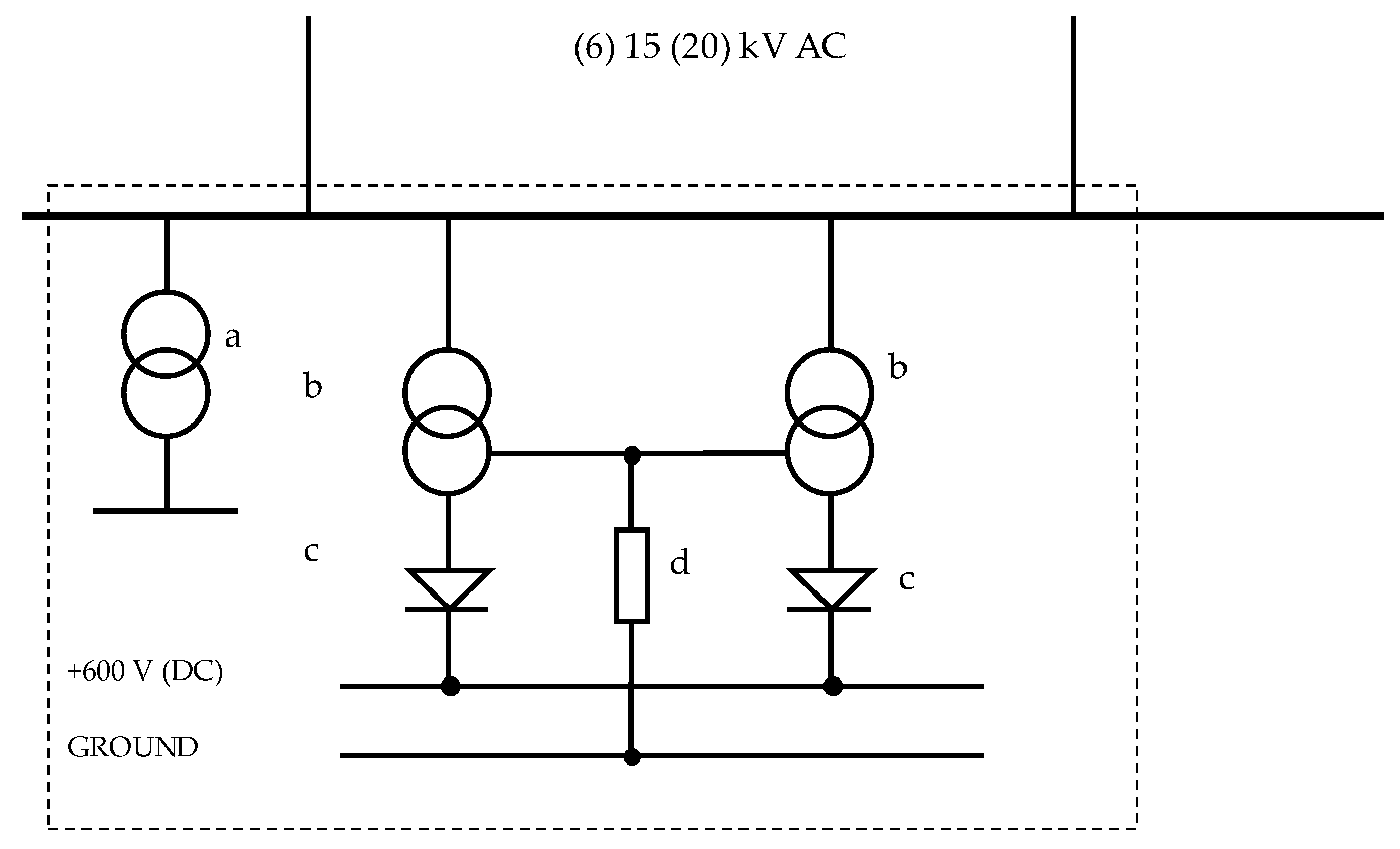
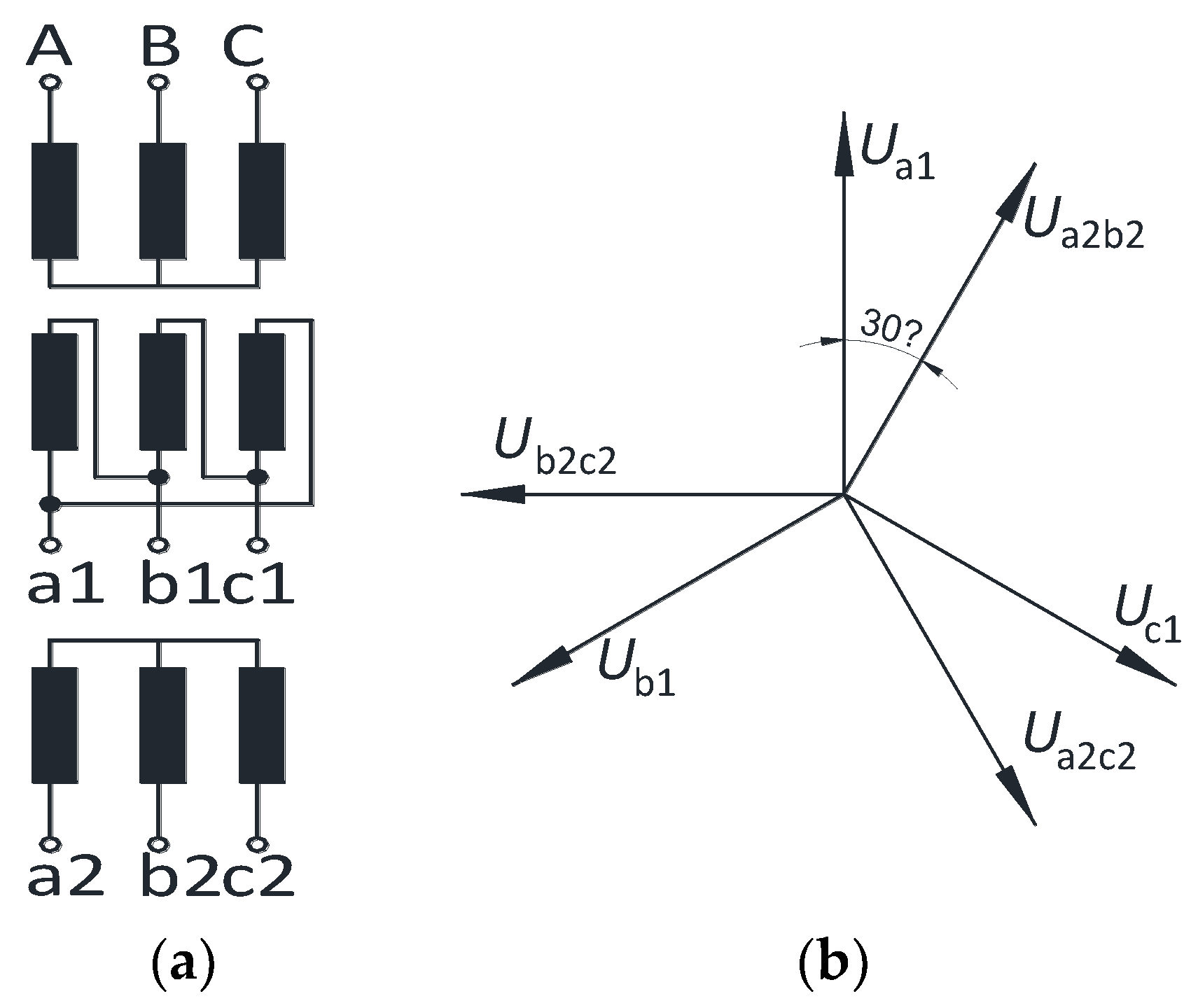
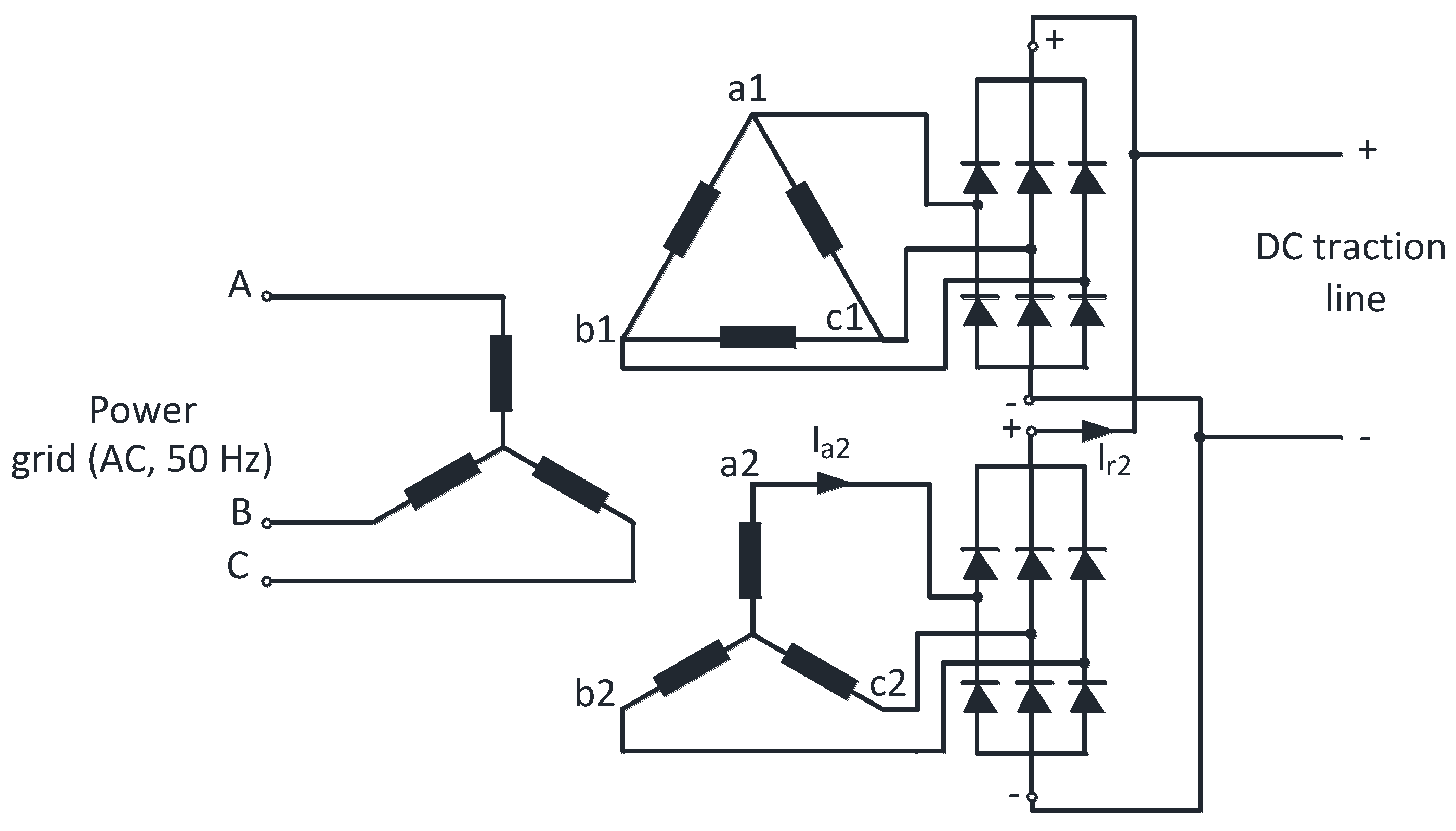
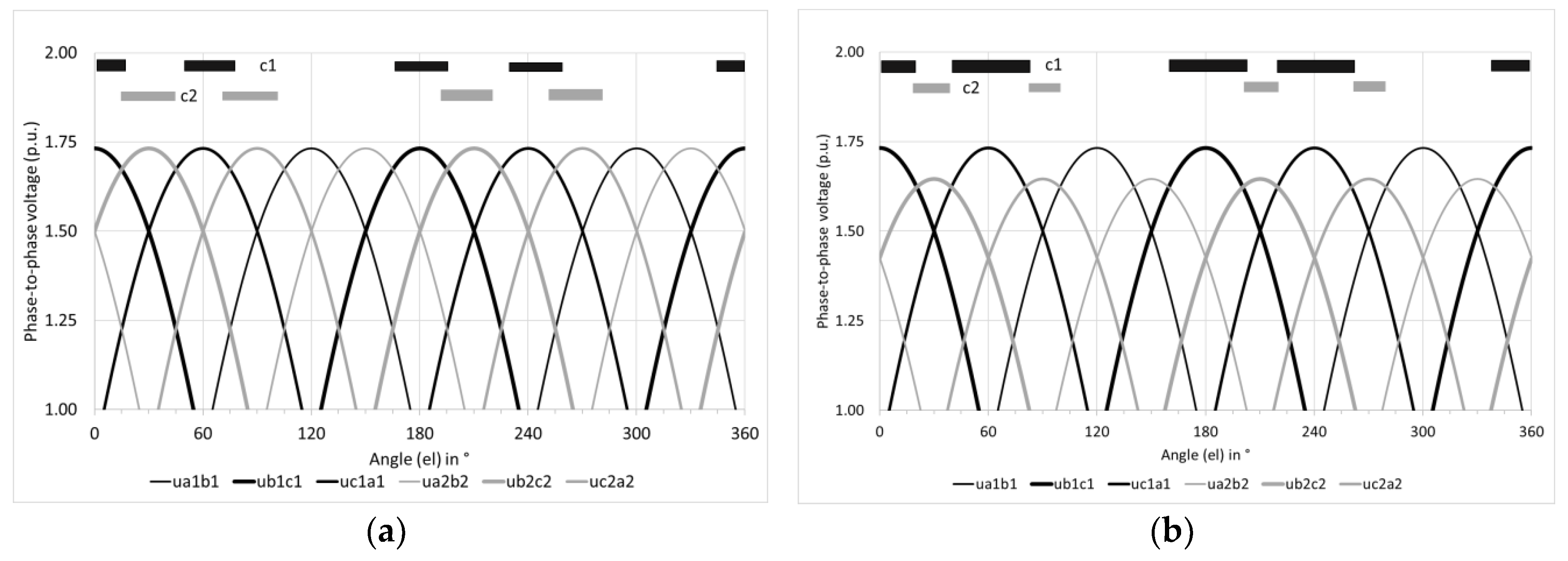
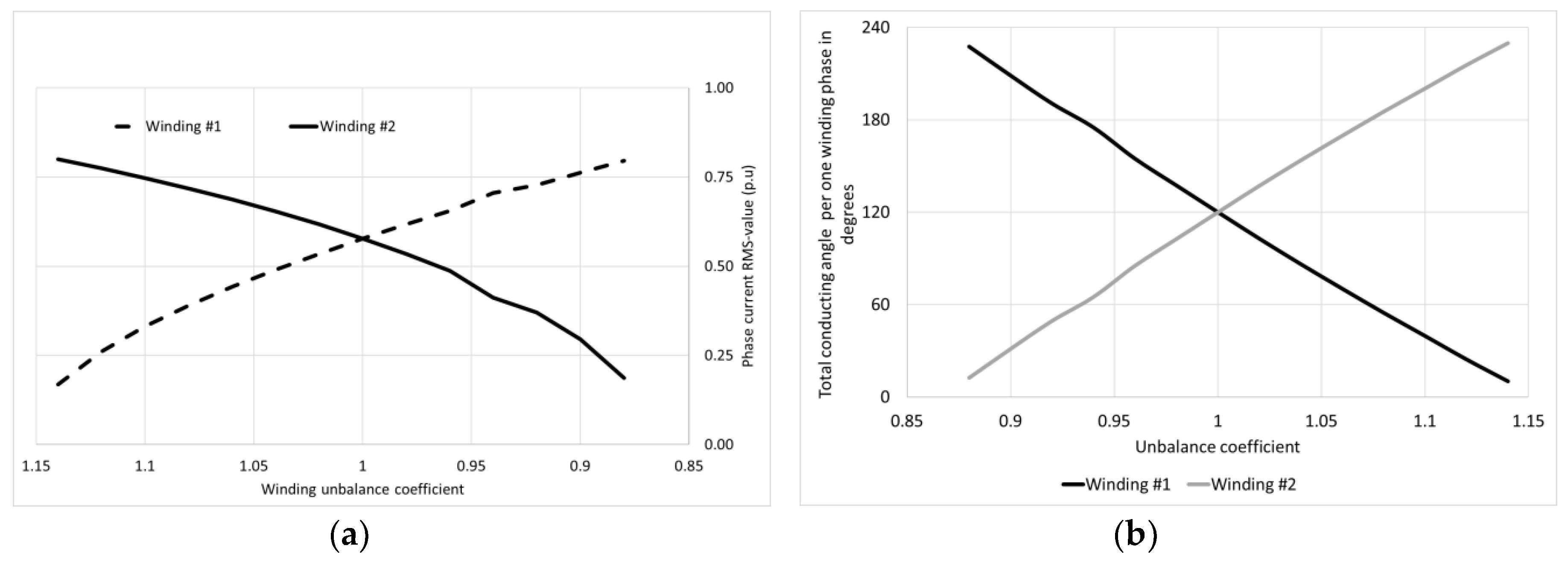
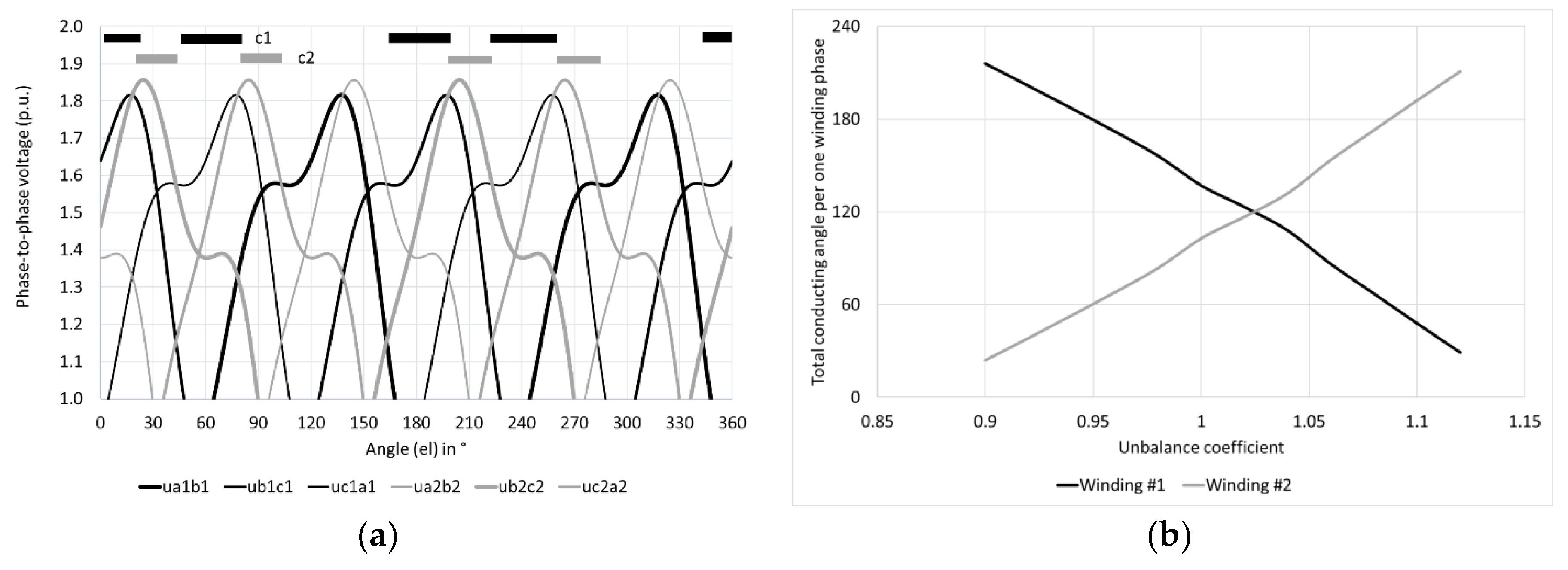
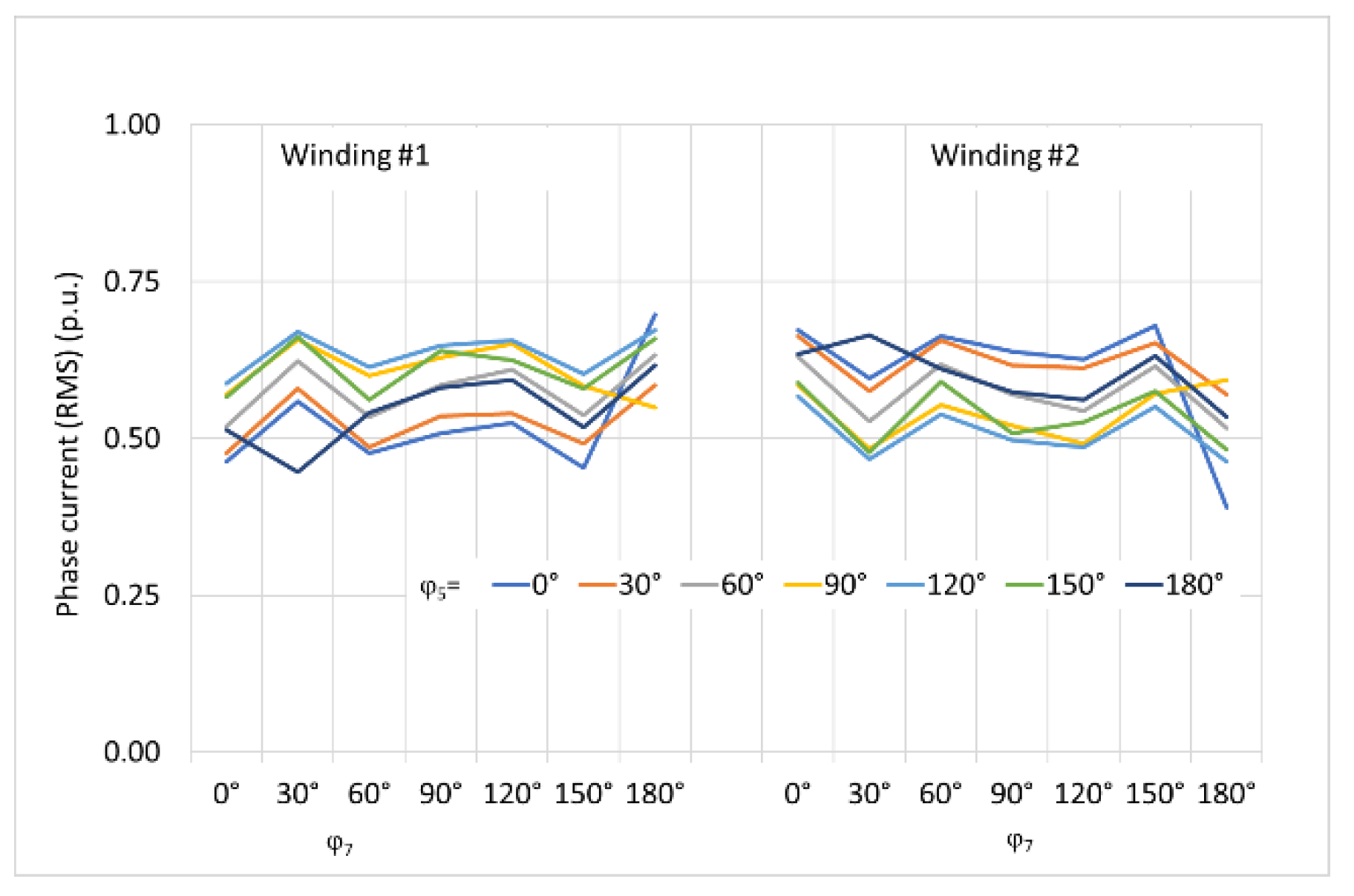
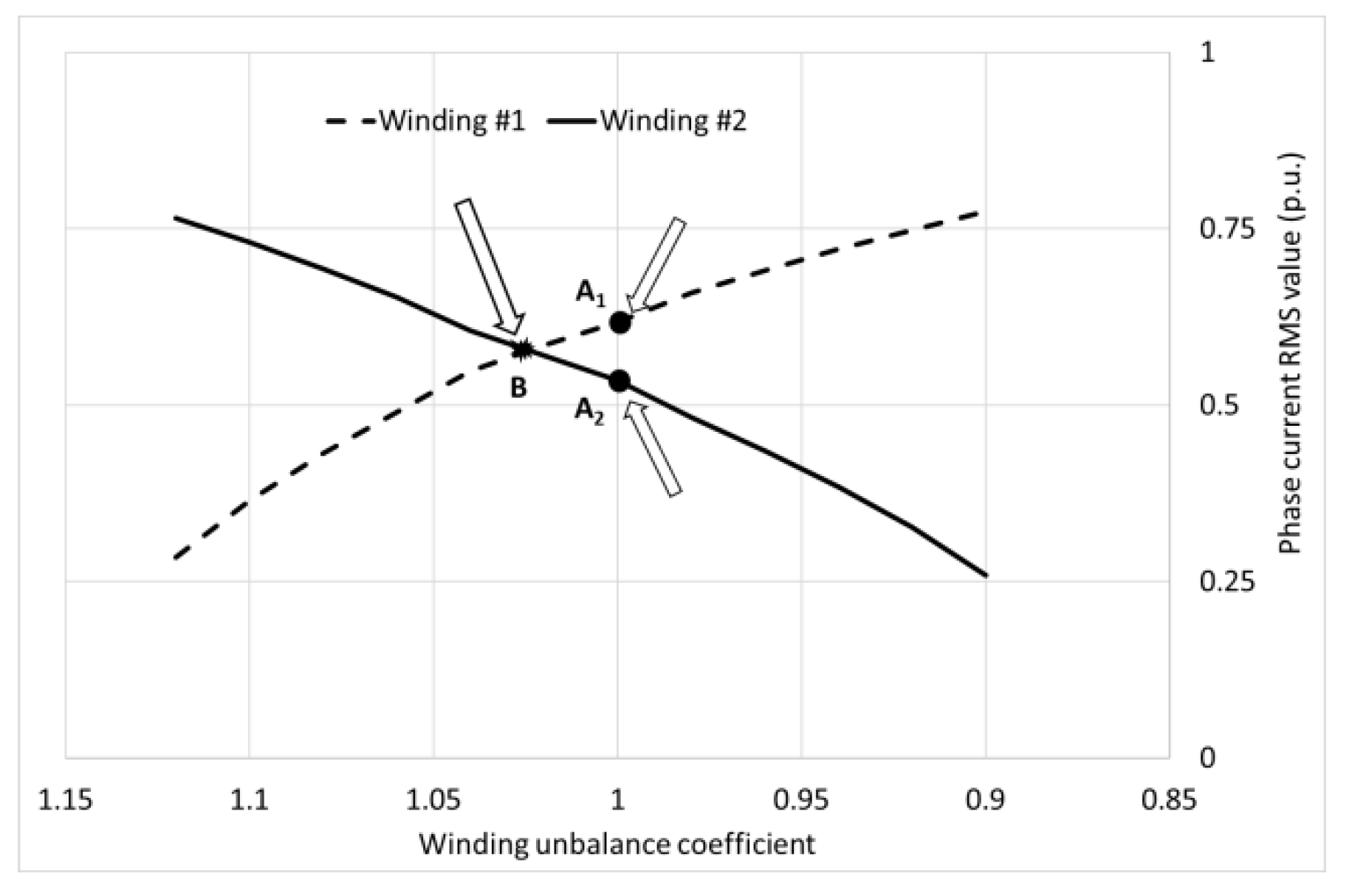


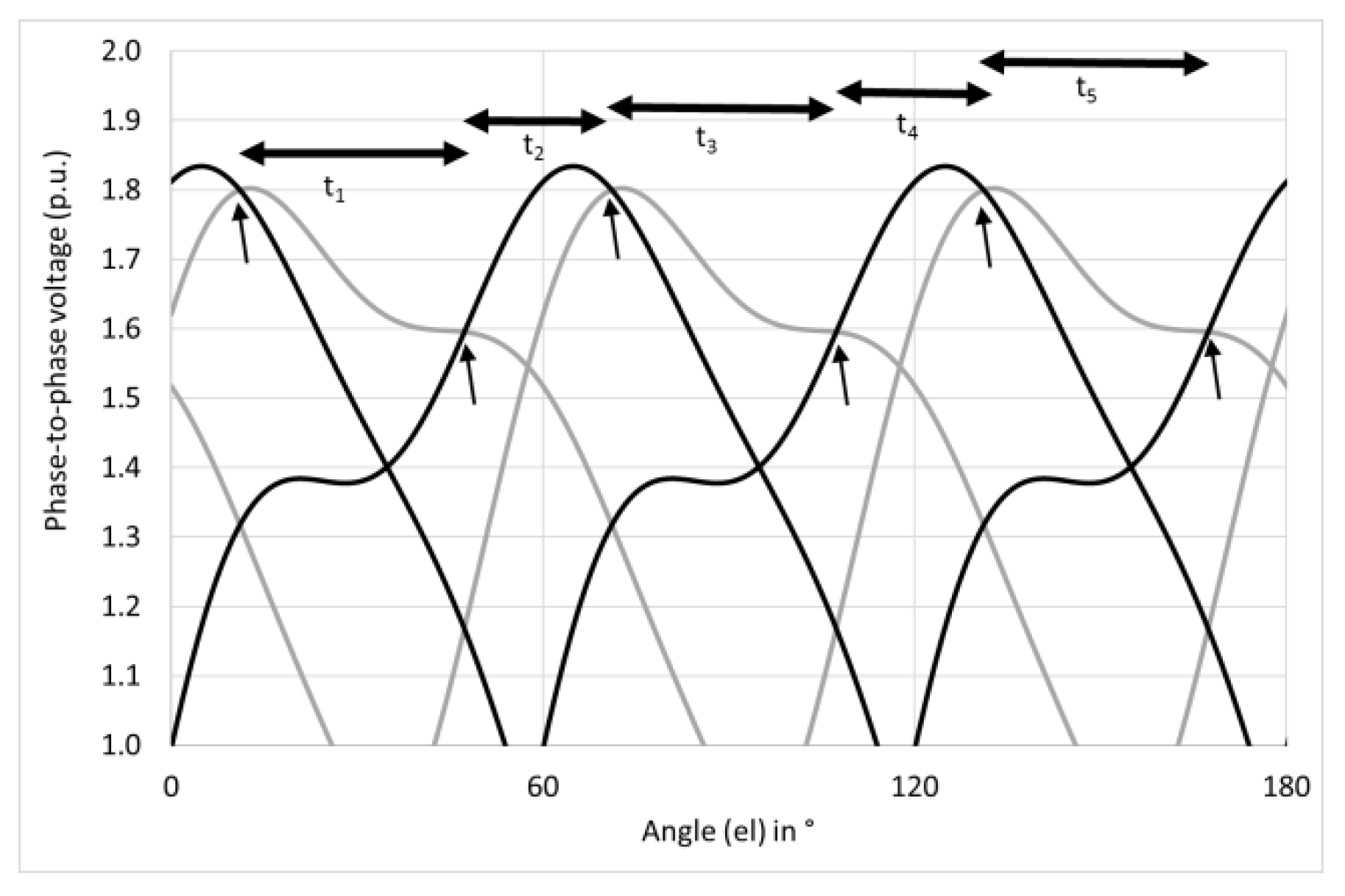
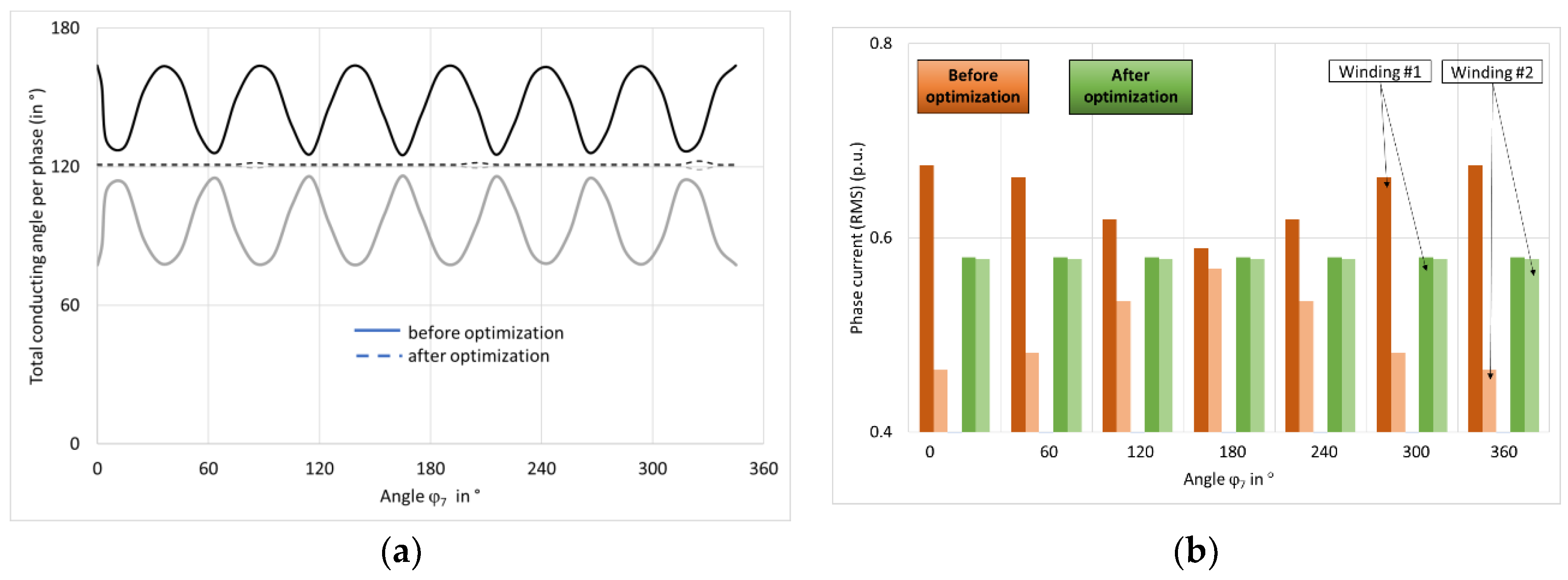
© 2019 by the authors. Licensee MDPI, Basel, Switzerland. This article is an open access article distributed under the terms and conditions of the Creative Commons Attribution (CC BY) license (http://creativecommons.org/licenses/by/4.0/).
Share and Cite
Kulesz, B.; Sikora, A.; Zielonka, A. The Application of Ant Colony Algorithms to Improving the Operation of Traction Rectifier Transformers. Computers 2019, 8, 28. https://doi.org/10.3390/computers8020028
Kulesz B, Sikora A, Zielonka A. The Application of Ant Colony Algorithms to Improving the Operation of Traction Rectifier Transformers. Computers. 2019; 8(2):28. https://doi.org/10.3390/computers8020028
Chicago/Turabian StyleKulesz, Barbara, Andrzej Sikora, and Adam Zielonka. 2019. "The Application of Ant Colony Algorithms to Improving the Operation of Traction Rectifier Transformers" Computers 8, no. 2: 28. https://doi.org/10.3390/computers8020028
APA StyleKulesz, B., Sikora, A., & Zielonka, A. (2019). The Application of Ant Colony Algorithms to Improving the Operation of Traction Rectifier Transformers. Computers, 8(2), 28. https://doi.org/10.3390/computers8020028




